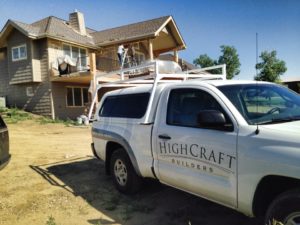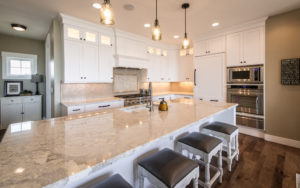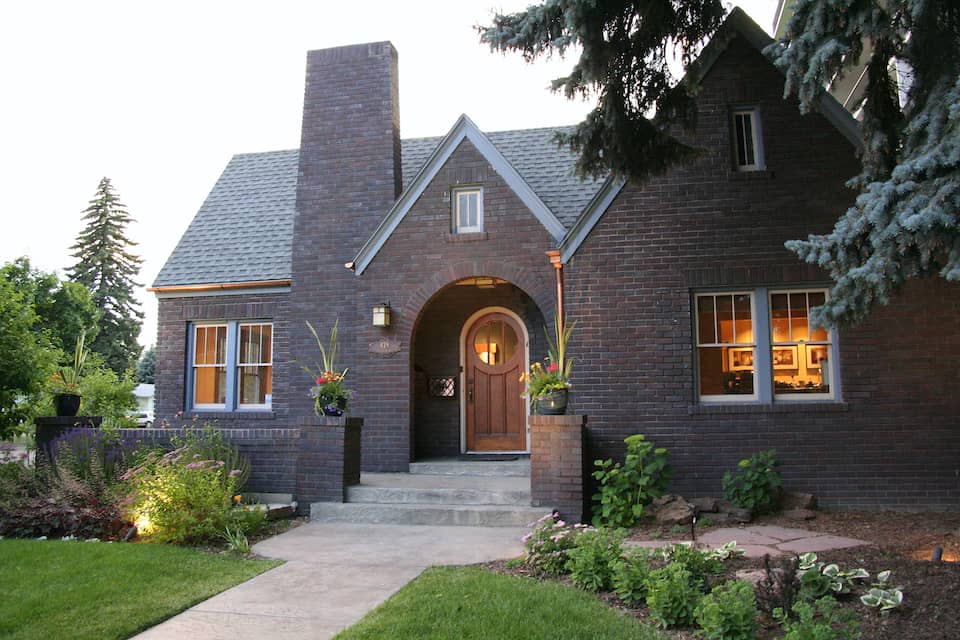
“We bought an older home in a neighborhood we absolutely love, and the house needs A LOT of work. Does it make more sense to remodel the existing structure, or tear it down to the foundation and build new?”
We hear this question all the time, and the short answer is: it depends.
It depends on your goals and budget, the condition of the home, any neighborhood restrictions, and so much more.
As you weigh the options of scraping down to the foundation and rebuilding versus remodeling, here are FIVE things to consider:
1. Is there anything about the home that works for you?
What do you like, and what do you not like about your house? Think interior and exterior. If the current layout works well, and you simply want to remove the old materials and reinstall new, then a remodel makes sense. Some older homes have high-quality materials and finishes that are irreplaceable, so if you want to preserve the original interior or exterior details, then you probably want to renovate. If your design plans involve moving multiple walls, increasing ceiling height, and rerouting plumbing and electrical, then a scrape might make more financial sense.
2. What is your vision for the home?
How many bedrooms and bathrooms do you need? Do you have a dream kitchen in mind? Is this a forever home or is resale a big factor? If you’re concerned about resale, then contact a local Realtor® about best strategies to increase property value. If this is your forever home, then it’s a good idea to talk to a professional contractor about Aging-in-Place construction practices and Universal Design. Before you tackle a project of this scale, be clear about your goals and be sure they complement your lifestyle and budget.
3. Is the home in poor condition?
There are a few tell-tale signs that it’s probably more cost-effective to scrape and rebuild versus remodel. Major foundation issues – often caused by the improper installation of materials that are incompatible with soil conditions – are usually too cost-prohibitive to repair. The same goes for other problems that pervade the entire home, including extensive wood rot, outdated utilities – such as knob-and-tube electrical, octopus furnaces, galvanized pipes – and hazardous materials like lead and asbestos. Each individual issue can be fixed or replaced, but in combination, the cost of these repairs can add up quickly. Look for other red flags such as a roof cave-in, and pay attention to the number of violations that must be corrected to bring your house up to code. A structural engineer can assess the home’s condition, and a professional contractor can help you crunch the numbers to determine if the necessary repairs are financially feasible, or if it’s better to scrape and start new.
4. Are there any restrictive regulations?
Land-use regulations are in place to protect the charm and character of our neighborhoods and to keep us safe, and these rules have significant influence on building plans. Depending on the age of your home, and if the home has historic significance, there may be certain things you can’t do, such as alter windows, change the exterior facade or pursue a complete demolition. In other words, certain decisions may be out of your hands. Regardless of the direction you take, all plans must pass through a fairly rigorous municipal review and permitting process, and you must adhere to property setback, square-footage and zoning regulations as well. And speaking of the review process, it’s usually significantly faster to receive city approval for a remodel versus a complete teardown. But if you do receive permission to scrape and build new, then the construction process is typically much faster, with fewer surprises, than a top-to-bottom remodel.
5. How much are you willing to spend?
We’ve already touched on several factors that influence the cost of tearing down versus remodeling. The key is to have a budget in mind before you tackle either option, and the trick is to stick with your budget.

“We often find that scrapes and large, whole-house remodels can be close in price at first,” says HighCraft project development manager Zach Larrick. “But during a scrape, many clients are tempted to go bigger and keep adding things, and that’s when the price can go up – when they go beyond the original footprint of the home.”
Zach points out that “Many times we’re not finalizing the answer of whether to scrape or do a significant remodel until we’re into the design phase.” He adds, “When dreams are on paper, we have a much better picture of project scope and associated costs.”
One more thing to consider about cost and budget. When you teardown and rebuild, you are fully committed to the bigger project and its big price tag. A remodel, on the other hand, lets you update your home in stages, allowing you to pay in smaller installments as you go. Check out “The Cost of Remodeling Everything at Once vs. in Phases Over Time” to weigh the pros and cons of each option.
Final Thoughts
Do you scrape or remodel? The final answer comes down to identifying the right fit for your unique situation, and that requires a conversation with a professional contractor during a tour of the property. Nobody would expect a doctor to make a diagnosis and write a prescription without first seeing the patient. The same holds true for a contractor who needs to see your home, and understand your pain points and lifestyle, before suggesting the best course of action.
Before you make a decision, take time to explore your design options, weigh the pros and cons of each, and choose the direction that’s best for you. Be realistic about your budget, timeline and goals for the project and clearly communicate them to your builder to keep everyone on the same page. Good contractors will help you articulate your vision, determine the true scope of your project, and navigate municipal review processes. There are a lot of moving parts with these larger projects, so choose a professional builder that has the capacity to tackle a project of this scale.
Additional Resources
Whether you scrape and build new, or remodel what you have, HighCraft’s experienced design-build team can navigate every detail of the planning and construction process so you don’t have to.
Our company has a strong working relationship with city zoning, planning, permitting and historic preservation departments across Northern Colorado. And our licensed architects, interior designers, engineers and craftsmen work together to realize your vision while respecting your budget.
And when it comes down to demolition during remodels and teardowns, we try to keep as much waste out of the landfill as possible. That’s why we created Full Circle, a nonprofit program dedicated to the salvage and sale of used construction materials to benefit local nonprofits.
Explore related HighCraft projects in the links below.

Clients scrape the old structure and build the lake house of their dreams in Before and After: Scrape and Build New.

And watch a renovation in progress – the large-scale remodel of the Ritter House, a circa 1920 historic home in the Eastside neighborhood of Fort Collins.
Part 1: Historic Ritter House Remodel
Part 2: Historic Ritter House Remodel
Part 3: Historic Ritter House Remodel
If you or someone you know is thinking about remodeling an existing home, or building new, contact HighCraft for a free consultation.

